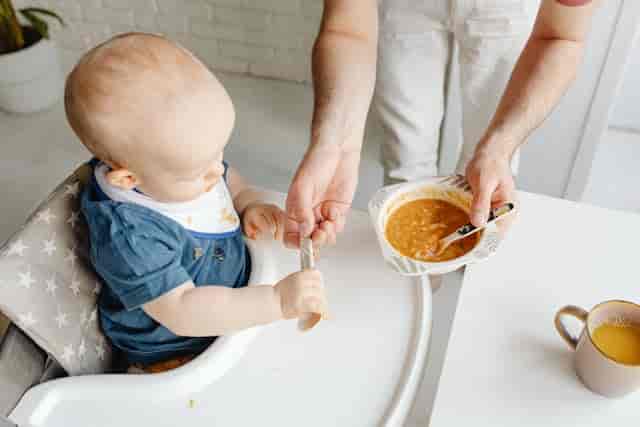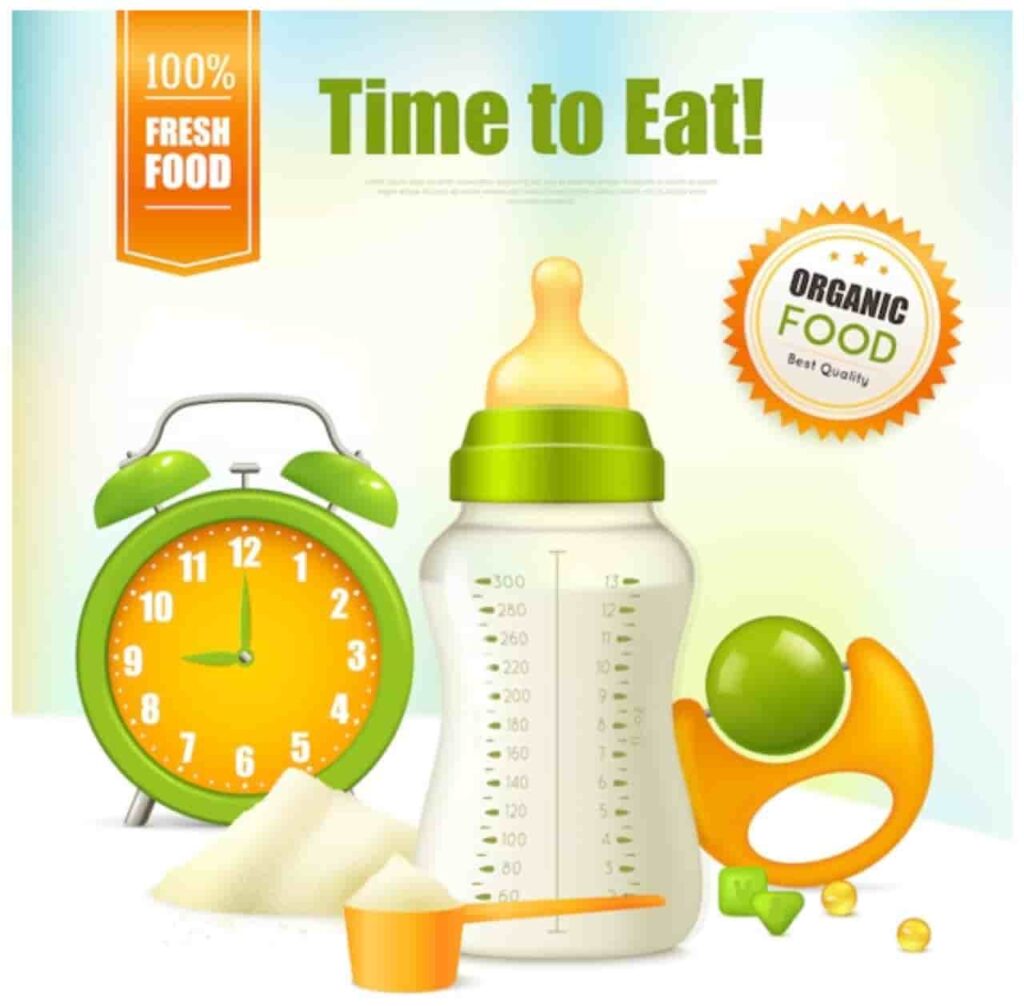Hey there! This post may contain affiliate links, meaning we get a small commission if you make a purchase through our links at no cost to you. I greatly appreciate your support! For more information please check our Disclosure Page.
Are you thinking about simple, delicious, and healthy baby food recipes? Are you ready to provide your baby with the best start in life? Dive into the world of organic baby food and watch your little one thrive on wholesome, nutritious meals made with love.
With the increasing awareness about the benefits of organic foods, many parents are now looking for organic baby food recipes that support their child’s growth and development. As parents, ensuring our babies get the best nutrition is usually a top priority.
Organic foods are free from harmful pesticides, synthetic fertilizers, and genetically modified organisms (GMOs), making them a healthier choice for our little ones. Not only does organic baby food contain fewer harmful chemicals and pesticides, but it also typically has higher nutritional value compared to non-organic options.
Thus, they are a great way to ensure that the little one gets the purest and most nutritious meals. We’ll cover organic baby food recipes in this blog post for every developmental stage of your child, from their first puree tastes to more complex flavors and textures as they get older.
What are organic baby food recipes?
Organic baby food recipes are instructions or guidelines for preparing meals for infants and toddlers using organic ingredients.
Organic ingredients are grown and processed without synthetic pesticides, fertilizers, GMOs, or artificial additives. These recipes aim to offer nutritious and safe meals for babies, ensuring they get essential minerals and vitamins from natural sources.
Stage 1: 4-6 Months
Single-Ingredient Purees
Single-ingredient purees are great for 4-6-month-old babies since they help discover potential food sensitivities or allergies and introduce them to the flavor of different foods.
Below are some simple, nutritious, and easy-to-make organic single-ingredient purees:
1. Organic Sweet Potato Puree

Fig. 1: Sweet potatoes (Pixabay)
Ingredients:
- 1 organic sweet potato
Instructions:
- Peel and chop the sweet potato into small cubes.
- Steam or boil the sweet potato until tender (about 15-20 minutes).
- Blend the sweet potato with a little water or breast milk/formula until smooth.
- Let it cool before serving.
If you don’t have the time to make this recipe, you can order an already made canned potato puree.
Order it here >> Canned Sweet Potato Puree
2. Organic Carrot Puree

Fig. 2: Organic carrots (Pixabay)
Ingredients:
- 3-4 organic carrots
Instructions:
- Peel and chop the carrots into small pieces.
- Steam or boil the carrots until tender (about 10-15 minutes).
- Blend the carrots with a small amount of water or breast milk/formula until smooth.
- Allow the puree to cool before serving.
3. Organic Apple Puree

Fig. 3: Organic apples (Pixabay)
Ingredients:
- 1-2 organic apples
Instructions:
- Peel, core, and chop the apples into small pieces.
- Steam or boil the apple pieces until soft (about 10 minutes).
- Blend the apples with a small amount of water or breast milk/formula until smooth.
- Let it cool before serving.
4. Organic Pear Puree

Fig. 4: Pears (Pixabay)
Ingredients:
- 1-2 organic pears
Instructions:
- Peel, core, and chop the pears into small pieces.
- Steam or boil the pear pieces until soft (about 10 minutes).
- Blend the pears with a small amount of water or breast milk/formula until smooth.
- Allow the puree to cool before serving.
5. Organic Avocado Puree

Fig.5: Avocado (Pixabay)
Ingredients:
- 1 ripe organic avocado
Instructions:
- Cut the avocado in half, remove the pit, and scoop out the flesh.
- Mash the avocado with a fork until smooth. You can also blend it with a little breast milk or formula for a smoother consistency.
- Serve immediately to prevent browning.
6. Organic Banana Puree

Fig. 6: Bananas (Pixabay)
Ingredients:
- 1 ripe organic banana
Instructions:
- Peel the banana and break it into smaller pieces.
- Mash the banana with a fork until smooth. You can also blend it with a little breast milk or formula for a smoother consistency.
- Serve immediately.
Stage 2: 6-8 Months
New Tastes and Textures
Introducing new tastes and textures for babies between 6-8 months is an exciting phase in their development. At this stage, you can start giving thicker purees and mashed foods to help them adapt to more complex textures.
Below are some recipes and ideas for introducing new tastes and textures to your baby:
7. Organic Apple and Oatmeal Mash

Fig. 7: Oatmeal (Pixabay)
Ingredients:
- 1 organic apple
- 1/4 cup organic rolled oats
- Water or breast milk/formula
Instructions:
- Peel, core, and chop the apple into small pieces.
- Steam or boil the apple until soft (about 10 minutes).
- Cook the oats according to package instructions, using water or breast milk/formula.
- Blend the cooked apple and oats together until you reach the desired consistency.
- Let it cool before serving.
8. Organic Banana and Avocado Mash
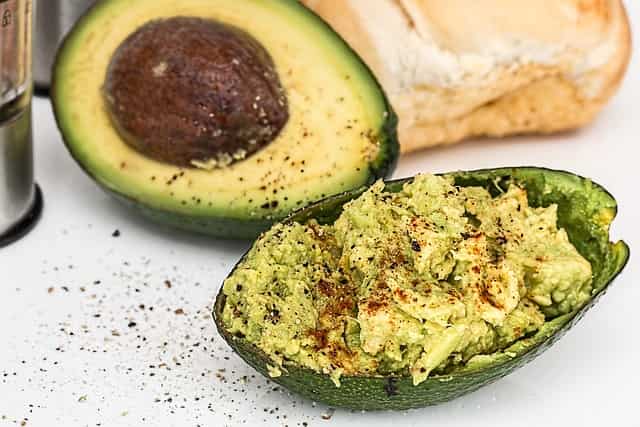
Fig. 8: Avocado mash (Pixabay)
Ingredients:
- 1 ripe organic avocado
- 1 ripe organic banana
Instructions:
- Cut the avocado in half, remove the pit, and scoop out the flesh.
- Peel the banana and break it into smaller pieces.
- Mash the avocado and banana together with a fork until smooth but slightly chunky.
- Serve immediately to prevent browning.
9. Organic Carrot and Lentil Mash

Fig. 9: Lentils (Pixabay)
Ingredients:
- 3-4 organic carrots
- 1/4 cup organic red lentils
- Water or low-sodium vegetable broth
Instructions:
- Peel and chop the carrots into small pieces.
- Rinse the lentils thoroughly.
- In a pot, add the carrots and lentils, and cover with water or vegetable broth.
- Simmer until the carrots and lentils are tender (about 20 minutes).
- Mash or blend the mixture to the desired consistency.
- Let it cool before serving.
10. Organic Pumpkin and Quinoa Puree

Fig. 10: Pumpkin (Pixabay)
Ingredients:
- 1 cup organic pumpkin puree (fresh or canned)
- 1/4 cup organic quinoa
- Water or breast milk/formula
Instructions:
- Rinse the quinoa thoroughly.
- Cook the quinoa according to package instructions.
- Mix the cooked quinoa with the pumpkin puree.
- Blend or mash to the desired consistency.
- Let it cool before serving.
11. Organic Blueberry and Pear Mash
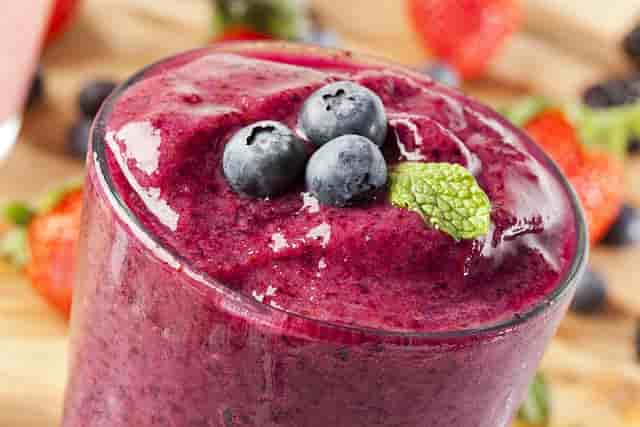
Fig. 11: Blueberry mash (Pixabay)
Ingredients:
- 1 cup organic blueberries
- 1 organic pear
Instructions:
- Peel, core, and chop the pear into small pieces.
- Steam the pear until soft (about 10 minutes).
- Add the blueberries and steam for an additional 5 minutes.
- Blend or mash the pear and blueberries together until smooth but with some texture.
- Let it cool before serving.
Stage 3: 8-10 Months
Introduction to Proteins and Grains
Introducing proteins and grains to babies between 8-10 months is an important step in diversifying their diet and ensuring they get the necessary nutrients for growth and development.
At this stage, you can start to introduce a variety of protein sources and grains in small, manageable textures that are safe for your baby to eat.
Protein Sources
12. Chicken Puree

Fig. 12: chicken meat (Pixabay)
Ingredients:
- 1 small organic chicken breast
- Water or low-sodium chicken broth (as needed)
Instructions:
- Cook the chicken breast by steaming or boiling until fully cooked (about 20 minutes).
- Cut the chicken into small pieces.
- Blend the chicken with water or broth until smooth, adding more liquid as needed for the desired consistency.
- Let it cool before serving.
13. Lentil Mash
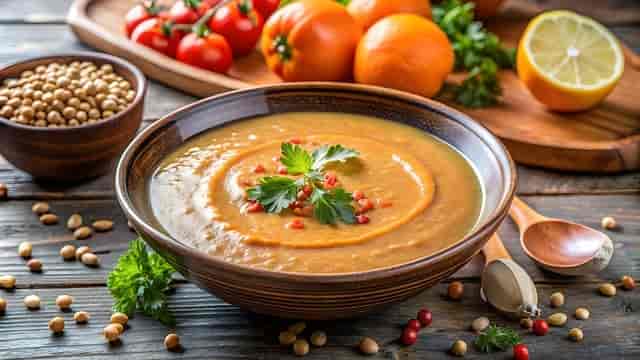
Fig. 13: Lentil mash (Pixabay)
Ingredients:
- 1/2 cup organic lentils
- Water (as needed)
Instructions:
- Rinse the lentils thoroughly.
- Boil the lentils in water until they are very soft (about 20-30 minutes).
- Mash the lentils with a fork or blend them for a smoother texture.
- Allow the mash to cool before serving.
14. Egg Yolk Puree

Fig. 14: Eggs (Pexels)
Ingredients:
- 1 organic egg
Instructions:
- Hard-boil the egg (about 10-12 minutes).
- Peel the egg and separate the yolk from the white (only use the yolk for babies under 1 year to reduce the risk of allergies).
- Mash the egg yolk with a little water, breast milk, or formula until smooth.
- Serve immediately.
Grain Sources
15. Oatmeal
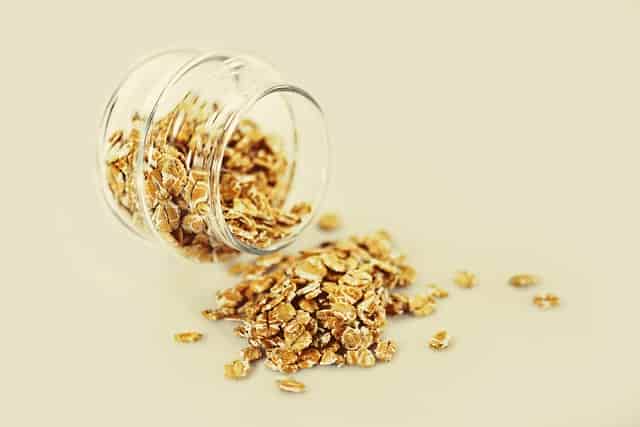
Fig. 15: Oats (Pixabay)
Ingredients:
- 1/4 cup organic oats
- Water or breast milk/formula (as needed)
Instructions:
- Cook the oats according to package instructions until they are very soft.
- Blend the cooked oats with water, breast milk, or formula to reach the desired consistency.
- Let it cool before serving.
16. Brown Rice Puree

Fig. 16: Brown rice (Unsplash)
Ingredients:
- 1/4 cup organic brown rice
- Water (as needed)
Instructions:
- Rinse the rice thoroughly.
- Cook the rice according to package instructions until very soft (about 30-40 minutes).
- Blend the cooked rice with water to reach the desired consistency.
- Allow it to cool before serving.
17. Quinoa Puree

Fig. 17: Quinoa (Pixabay)
Ingredients:
- 1/4 cup organic quinoa
- Water (as needed)
Instructions:
- Rinse the quinoa thoroughly.
- Cook the quinoa according to package instructions until very soft (about 15 minutes).
- Blend the cooked quinoa with water to reach the desired consistency.
- Let it cool before serving.
Combining Proteins and Grains
18. Chicken and Rice Puree
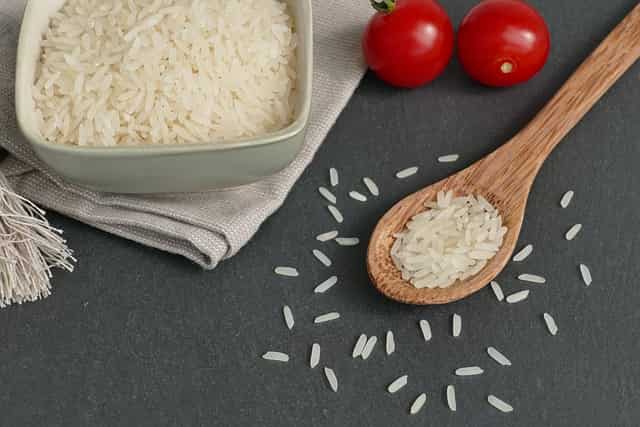
Fig. 18: Rice (Pixabay)
Ingredients:
- 1 small organic chicken breast
- 1/4 cup organic brown rice
- Water or low-sodium chicken broth (as needed)
Instructions:
- Cook the chicken breast by steaming or boiling until fully cooked (about 20 minutes).
- Rinse the rice and cook it until very soft.
- Blend the chicken and rice with water or broth until smooth.
- Allow the puree to cool before serving.
19. Lentil and Quinoa Mash

Fig. 19: Quinoa (Pixabay)
Ingredients:
- 1/2 cup organic lentils
- 1/4 cup organic quinoa
- Water (as needed)
Instructions:
- Rinse the lentils and quinoa thoroughly.
- Cook the lentils and quinoa separately until very soft.
- Mash or blend the lentils and quinoa with water until smooth.
- Let it cool before serving.
20. Oatmeal and Egg Yolk Puree
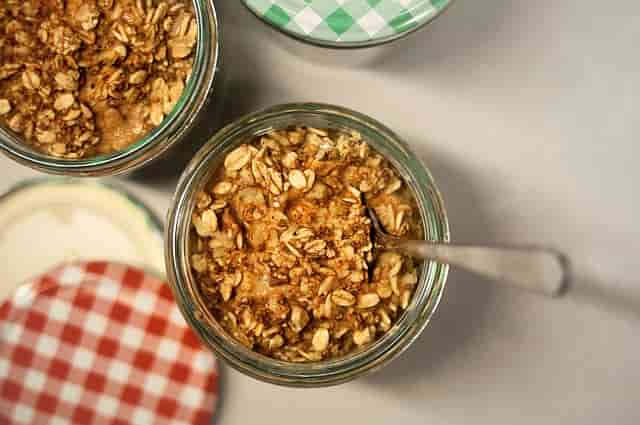
Fig. 20: Oat meal (Pixabay)
Ingredients:
- 1/4 cup organic oats
- 1 organic egg
- Water or breast milk/formula (as needed)
Instructions:
- Cook the oats until very soft.
- Hard-boil the egg and separate the yolk.
- Blend the oats and egg yolk with water or breast milk/formula until smooth.
- Serve immediately.
Stage 4: 10-12 months
Family Foods
At 10-12 months, babies are ready to start eating more of the same foods as the rest of the family, provided these foods are appropriately prepared to ensure they are safe and easy to eat.
Introducing your baby to family foods helps them develop healthy eating habits and enjoy shared mealtime experiences.
Key Considerations
- Avoid added sugar and salt: Babies don’t require extra sugar or salt. Prepare foods without these ingredients or set aside your baby’s portion before adding them.
- Cut into small pieces: Ensure that your baby food is cut into small, manageable pieces to prevent choking.
- Soft texture: Select foods that are readily mashed or that are soft.
- Steer clear of choking hazards: Steer clear of foods that can cause choking, such as whole nuts, hard sweets, and whole grapes.
21. Soft Vegetables
Examples: Steamed broccoli, carrots, sweet potatoes, peas, zucchini
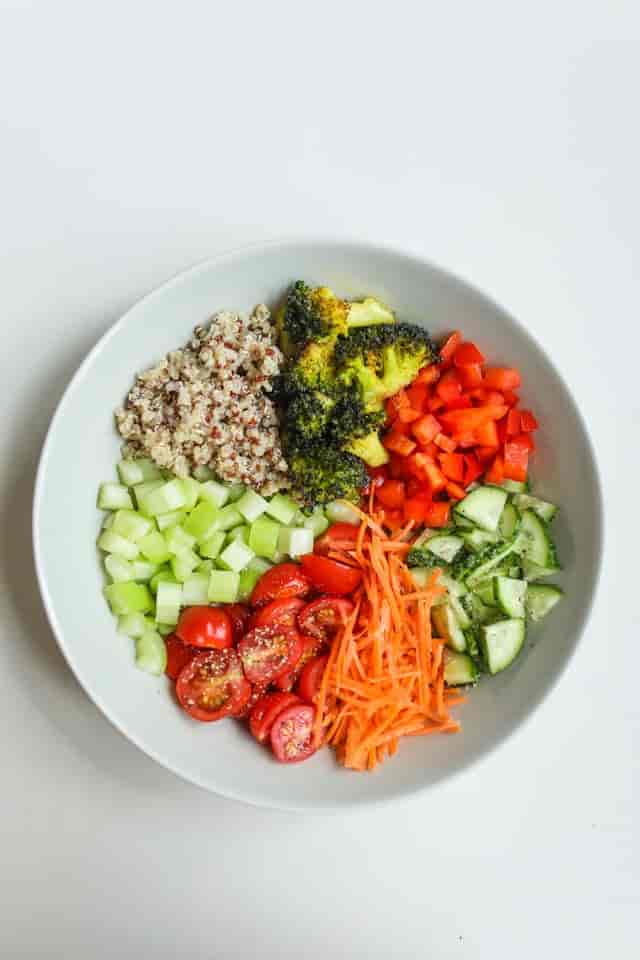
Fig. 21: Soft vegetables (Pexels)
Instructions:
- Steam or boil vegetables until they are very soft.
- Cut into small pieces or mash with a fork if necessary.
- Serve as finger foods or mixed with other dishes.
22. Soft Fruits
Examples: Bananas, ripe avocados, peeled and chopped apples or pears, blueberries (halved), peaches
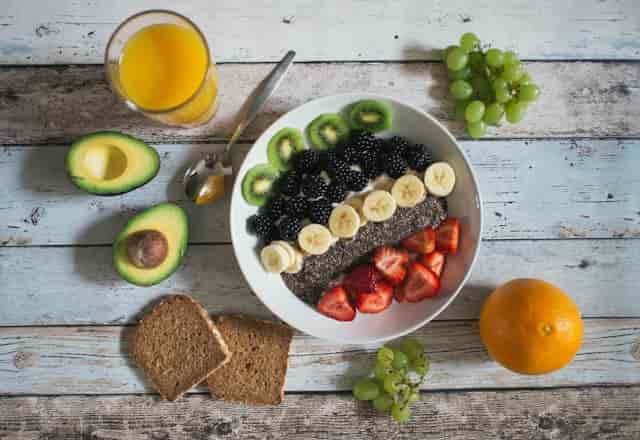
Fig. 22: Soft Fruits (Unsplash)
Instructions:
- Peel and cut fruits into small pieces.
- Serve as finger foods or mashed with a fork.
23. Small Pieces of Meat or Poultry
Examples: Chicken, turkey, beef

Fig. 23: Small pieces of meat (Pexels)
Instructions:
- Cook the meat until it is tender and fully cooked.
- Cut into very small, bite-sized pieces or shred.
- Serve as finger foods or mixed into other dishes.
24. Dairy Products
Examples: Small pieces of cheese, yogurt, cottage cheese

Fig. 24: Dairy product (Pexels)
Instructions:
- Choose plain, full-fat varieties without added sugars.
- Serve small pieces of cheese or spoonfuls of yogurt or cottage cheese.
25. Eggs
Examples: Scrambled eggs, hard-boiled eggs

Fig. 25: Eggs (Pexels)
Instructions:
- Cook eggs thoroughly.
- Serve scrambled eggs or cut hard-boiled eggs into small pieces.
26. Organic Pasta with Veggie Sauce
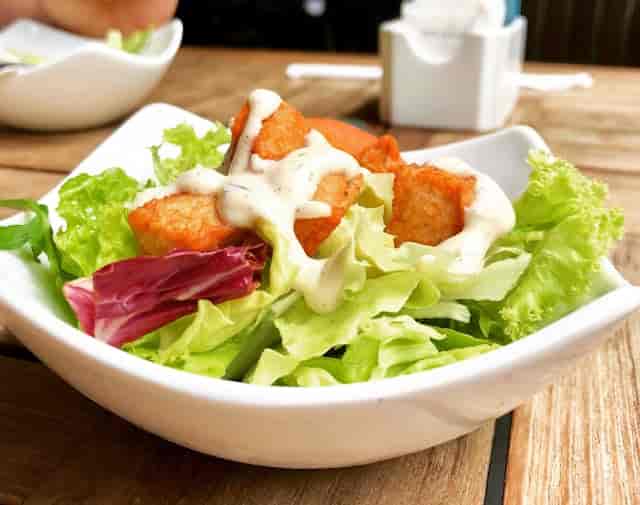
Fig. 26: Veggie sauce (Pexels)
Ingredients:
- 1 cup organic whole wheat pasta
- 1 cup organic spinach
- 1 organic tomato, chopped
- 1 clove garlic, minced
- 1 tbsp organic olive oil
Instructions:
- Cook the pasta according to package instructions.
- In a pan, sauté the garlic in olive oil until fragrant.
- Add the tomato and spinach, cooking until the spinach is wilted and the tomato is soft.
- Blend the veggies into a sauce and mix with the pasta.
- Cool before serving.
Tips for Preparing Organic Baby Food
- Start Simple: Parents should introduce one new food at a time and wait a few days before bringing in another to monitor for allergies.
- Use seasonal, fresh produce: Seasonal, fresh organic produce usually contains more nutrients and a better flavor.
- Batch cooking: Prepare larger batches and freeze portions in ice cube trays for convenient future meals.
- Remain hydrated: Make sure your baby drinks enough water, particularly as they begin to consume more solid meals.
Stage 5: 12 + Months
Toddler meals
When your child enters the toddler years, their food requirements change to incorporate more texture and diversity.
As newborns grow into toddlerhood, Annabel Karmel indicates that their eating habits usually change significantly.
She adds that in an ideal world, our kids would gladly consume a diverse, healthful diet that provided them with all the vitamins and nutrients they require for this stage of development.
Introducing a balanced diet with a wide range of organic foods is key to supporting their growth and development.
Below are some delicious and nutritious baby food recipes suitable for toddlers aged 12 months and older.
Key Considerations
- Finger foods: Toddlers should be encouraged to feed themselves by giving them bite-sized portions.
- Balanced diet: Make sure your meals contain a range of fruits, vegetables, healthy fats, proteins, and carbs.
- Limit salt and sugar: Establish good eating habits by limiting additional sugar and salt.
- Avoid choking hazards: Keep away from meals that are round, hard, or small as they may choke the child.
Toddler Organic Recipes
27. Vegetable and Cheese Mini Muffins
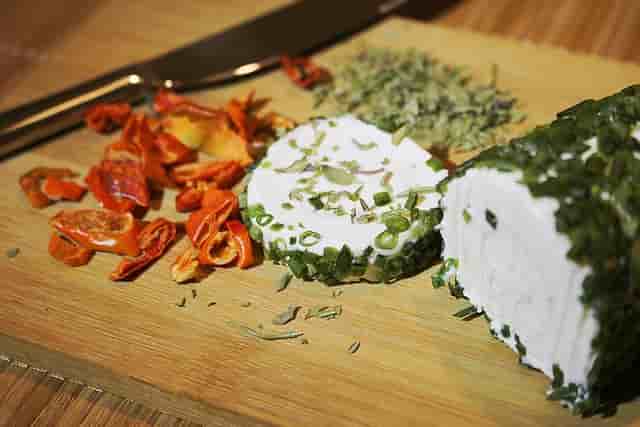
Fig 27: Cheese and herbs (Pixabay)
Ingredients:
- 1 cup organic whole wheat flour
- 1/2 teaspoon baking powder
- 1/4 teaspoon baking soda
- 1/2 cup organic grated zucchini
- 1/2 cup organic grated carrot
- 1/2 cup organic shredded cheddar cheese
- 1/2 cup organic plain yogurt
- 1 organic egg
- 1/4 cup organic unsweetened applesauce
- 1/4 cup organic olive oil
Instructions:
- Preheat the oven to 350°F (175°C). Grease a mini muffin tin.
- In a large bowl, mix the flour, baking powder, and baking soda.
- Add the grated zucchini, grated carrot, and shredded cheddar cheese. Mix well.
- In another bowl, whisk together the yogurt, applesauce, egg, and olive oil.
- Combine the wet ingredients with the dry ingredients, mixing until just combined.
- Spoon the batter into the prepared muffin tin.
- Bake for about 15-20 minutes or until a toothpick inserted into the center of a muffin comes out clean.
- Let cool before serving.
28. Chicken and Sweet Potato Patties

Fig. 28: Chicken (Pixabay)
Ingredients:
- 1 organic chicken breast, cooked and shredded
- 1 organic sweet potato, peeled and grated
- 1/2 cup organic breadcrumbs
- 1 organic egg
- 1/4 teaspoon organic garlic powder
- 1/4 teaspoon organic onion powder
- 2 tablespoons organic olive oil
Instructions:
- In a big bowl, mix the shredded chicken, grated sweet potato, breadcrumbs, egg, garlic powder, and onion powder.
- Create the mixture into small patties.
- In a large skillet, heat the olive oil over medium heat.
- Cook the patties for about 3-4 minutes on each side or until golden brown and cooked through.
- Let cool before serving.
29. Quinoa and Veggie Stir-Fry
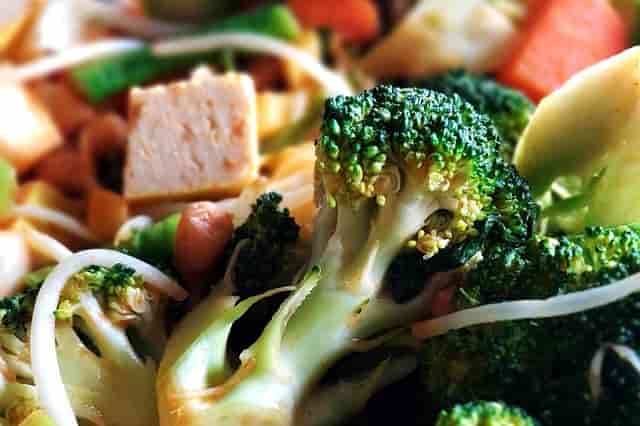
Fig. 29: Veggie stir-fry (Pexels)
Ingredients:
- 1 cup organic quinoa
- 2 cups water
- 1 tablespoon organic olive oil
- 1 cup organic broccoli florets
- 1 organic bell pepper, chopped
- 1/2 cup organic peas
- 1 organic carrot, sliced
- 1/2 teaspoon organic soy sauce (low sodium)
- 1/2 teaspoon organic sesame oil
Instructions:
- Rinse the quinoa under cold water.
- In a medium saucepan, combine the quinoa and water. Bring to a boil, then reduce heat to low, cover, and simmer for 15 minutes or until the water is absorbed and the quinoa is tender.
- In a large skillet, heat the olive oil over medium heat. Add the broccoli, bell pepper, peas, and carrot. Cook until the vegetables are tender, about 5-7 minutes.
- Add the cooked quinoa to the skillet and mix well.
- Stir in the soy sauce and sesame oil. Cook for another 2-3 minutes until heated through.
- Let cool slightly before serving.
30. Spinach and Ricotta Stuffed Shells
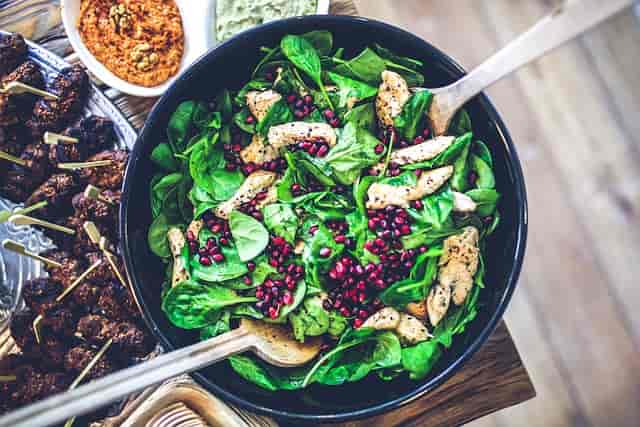
Fig. 30: Spinach chicken (Pixabay)
Ingredients:
- 1 cup organic ricotta cheese
- 1 cup organic spinach, chopped
- 1/2 cup organic shredded mozzarella cheese
- 1/4 cup organic grated Parmesan cheese
- 1 organic egg
- 12 organic jumbo pasta shells
- 1 cup organic marinara sauce
Instructions:
- Preheat the oven to 375°F (190°C). Cook the pasta shells according to package instructions, then drain and set aside.
- In a large bowl, mix together the ricotta cheese, chopped spinach, mozzarella cheese, Parmesan cheese, and egg.
- Stuff every pasta shell with the ricotta mixture.
- Spread a thin layer of marinara sauce in a baking dish. Place the stuffed shells in the dish.
- Pour the remaining marinara sauce over the shells.
- Cover with aluminum foil and bake for 20-25 minutes, or until heated through and the cheese is melted.
- Let cool slightly before serving.
31. Fruit and Yogurt Parfait

Fig. 31: Fruit and yogurt parfait (Pixabay)
Ingredients:
- 1 cup organic plain yogurt
- 1/2 cup organic mixed berries (strawberries, blueberries, raspberries)
- 1/4 cup organic granola (optional, for older toddlers)
- 1 tablespoon organic honey (optional, for toddlers over 1-year-old)
Instructions:
- In a small bowl or cup, layer the yogurt, mixed berries, and granola.
- Drizzle with honey if desired.
- Serve immediately.
Tips for Meal Prep and Storage
Effective meal prep and storage are crucial to providing your baby with nutritious, safe, and convenient organic meals.
Meal Prep Tips
1. Plan Your Menu
- Weekly Planning: Set a weekly meal plan to ensure variety and balance in your baby’s diet.
- Shopping List: Make a detailed shopping list based on your meal plan to save time and avoid unnecessary purchases.
2. Batch Cooking
- Cook in Bulk: Prepare large batches of purees, grains, and proteins.
- Use Versatile Recipes: Choose recipes that can be easily adapted or mixed with other ingredients.
3. Prep Ingredients in Advance
- Wash, Peel, and Chop: Clean and cut fruits and vegetables ahead of time.
- Portion Ingredients: Divide ingredients into portions for easy assembly during the week.
4. Use Simple Recipes
- One-Pot Meals: Opt for recipes that minimize the number of pots and pans used.
- Blend and Freeze: Blend ingredients and freeze them in small portions for quick defrosting.
Storage Tips
1. Proper Containers
Airtight Containers: Use BPA-free, airtight containers to maintain freshness and prevent contamination.
Portion Control: Store food in small, single-serving containers or use ice cube trays for freezing purees.
2. Label and Date
- Clear Labeling: Label containers with the type of food and the date it was prepared.
- FIFO (First In, First Out): Use older food first to minimize waste and ensure freshness.
3. Freezing
- Suitable Foods: Freeze purees, grains, and proteins that freeze well.
- Ice Cube Trays: Freeze purees in ice cube trays, then transfer the cubes to labeled freezer bags for easy portioning.
4. Refrigeration
- Short-Term Storage: Store prepared baby food in the refrigerator for up to 3-4 days.
- Temperature: Keep the refrigerator at or below 40°F (4°C).
5. Thawing and Reheating
- Thaw Safely: Thaw frozen baby food in the refrigerator or use a bowl of warm water for quick thawing.
- Reheat Thoroughly: Reheat food until it is piping hot throughout, then let it cool to a safe temperature before feeding.
Safety Tips
1. Maintain Cleanliness
- Sanitize Surfaces: Clean all preparation surfaces, utensils, and equipment thoroughly before use.
- Hand Washing: Wash hands thoroughly with soap and water before handling food.
2. Avoid Cross-Contamination
- Separate Cutting Boards: Use separate cutting boards for raw meats and other foods.
- Proper Cooking: Ensure meats are cooked to the appropriate internal temperature to kill harmful bacteria.
3. Safe Storage Practices
- Cool Quickly: Cool hot foods quickly by placing them in shallow containers and refrigerating them immediately.
- Monitor Storage Times: Adhere to recommended storage times to ensure food safety.
4. Check for Spoilage
- Visual and Smell Test: Check stored food for signs of spoilage, such as changes in color, texture, or smell.
- When in doubt, throw it out: If you’re unsure about the safety of stored food, it’s better to discard it.
Conclusion
Starting your infant off with organic food from a young age lays a solid foundation for good eating practices. These recipes are designed to support your baby’s growth and development at every stage, providing delicious and healthy meals that you can feel good about.
Remember to always introduce new foods one at a time, and consult with your pediatrician if you have any concerns about allergies or sensitivities. By providing a range of textures and flavors appropriate for their developmental stage, you can help your child enjoy a nutritious and diverse diet.
We’d love to hear how your baby enjoys these recipes! Share your experiences and tips in the comments section below. Happy feeding!
References
Karmel Annabel. Delicious, Nutritious Recipes for Baby, Toddler & Family. https://www.annabelkarmel.com/wp-content/uploads/2018/08/Ebook-AK-club-.pdf
